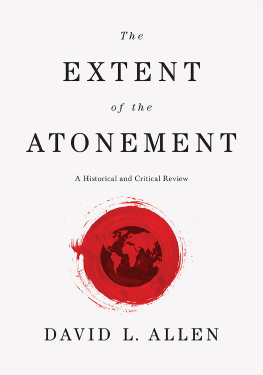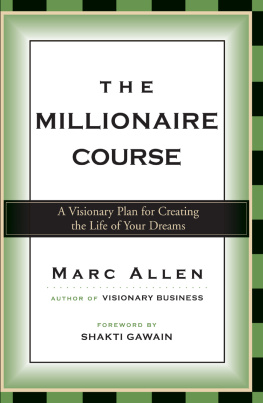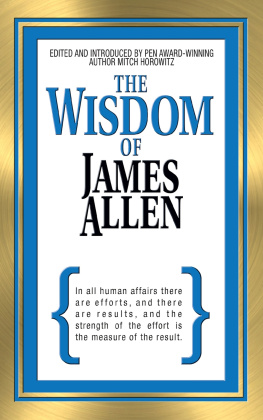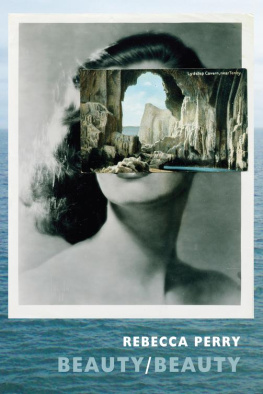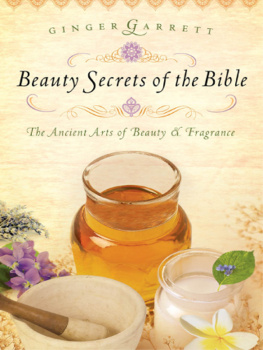Allen - Striking Beauty
Here you can read online Allen - Striking Beauty full text of the book (entire story) in english for free. Download pdf and epub, get meaning, cover and reviews about this ebook. year: 2015, publisher: Columbia University Press, genre: Science. Description of the work, (preface) as well as reviews are available. Best literature library LitArk.com created for fans of good reading and offers a wide selection of genres:
Romance novel
Science fiction
Adventure
Detective
Science
History
Home and family
Prose
Art
Politics
Computer
Non-fiction
Religion
Business
Children
Humor
Choose a favorite category and find really read worthwhile books. Enjoy immersion in the world of imagination, feel the emotions of the characters or learn something new for yourself, make an fascinating discovery.

Striking Beauty: summary, description and annotation
We offer to read an annotation, description, summary or preface (depends on what the author of the book "Striking Beauty" wrote himself). If you haven't found the necessary information about the book — write in the comments, we will try to find it.
Allen: author's other books
Who wrote Striking Beauty? Find out the surname, the name of the author of the book and a list of all author's works by series.
Striking Beauty — read online for free the complete book (whole text) full work
Below is the text of the book, divided by pages. System saving the place of the last page read, allows you to conveniently read the book "Striking Beauty" online for free, without having to search again every time where you left off. Put a bookmark, and you can go to the page where you finished reading at any time.
Font size:
Interval:
Bookmark:
STRIKING BEAUTY
STRIKING BEAUTY
A Philosophical Look at the Asian Martial Arts
BARRY ALLEN

Columbia University Press
New York
Columbia University Press
Publishers Since 1893
New York Chichester, West Sussex
cup.columbia.edu
Copyright 2015 Columbia University Press
All rights reserved
E-ISBN 978-0-231-53934-0
Library of Congress Cataloging-in-Publication Data
Allen, Barry, 1957
Striking beauty : a philosophical look at the Asian martial arts / Barry Allen.
pages cm
Includes bibliographical references and index.
ISBN 978-0-231-17272-1 (cloth : alk. paper)
ISBN 978-0-231-53934-0 (e-book)
1. Human body (Philosophy) 2. Mind and body. 3. Martial artsPhilosophy. I. Title.
B105.B64A45 2015
796.815'501dc23
2014049265
A Columbia University Press E-book.
CUP would be pleased to hear about your reading experience with this e-book at .
COVER IMAGE: Superstock.com
COVER DESIGN: Evan Gaffney
References to Web sites (URLs) were accurate at the time of writing. Neither the author nor Columbia University Press is responsible for URLs that may have expired or changed since the manuscript was prepared.
FOR GRAND MASTER DON CHA
Once one has traveled through the gates of the sages, it is hard to take anything else as a teaching.
MENCIUS
CONTENTS
When the martial is matched with the spiritual and it is experienced in the body and mind, this then is the practice of martial arts.
YANG FAMILY FORTY CHAPTERS
When my hapkido teacher, Grand Master Don Cha, watches one of us perform a technique, he often says, Good! if it was OK, because he likes to be positive. A more competent performance may earn a praiseful Excellent! But we know we are doing well when he exclaims, Beautiful!
Even though we are training in techniques of extraordinary violence, there is no violence in our training, as we amiably practice with each other in the dojang. But what we are training in, what it is for, is violence. Where is the beauty in something so vested in violence? The question remains unanswerable until we understand something about beauty and something about violence. We also need to know something about the Asian martial arts themselves to understand their paradoxical relationship with beauty and violence.
What I mean by Asian martial arts is the originally Chinese, then East Asian, and now global traditions of usually unarmed personal combat. This is the martial arts of the kung fu movies, Chinas contribution to world cinema. It is also the martial arts one finds taught in practice halls in nearly every major city of the world. One can train in Shtkan karate in Nairobi and wing chun in Stockholm. Probably
The unexampled popularity of Asian combat arts might prompt philosophers to look into the practice and its values and assumptions, but in fact, few have. That is one reason for my writing this book. Another concerns the situation of philosophy in what might be called the post-Western period. Nearly all the martial arts I discuss date back to China. Over the centuries, practitioners and connoisseurs of these arts developed philosophical interpretations in written teachings that draw on the main currents of traditional Chinese thought, making the Asian martial arts a milieu for comparative philosophy. Accordingly, we can look at Chinese philosophy through the perspective of the martial arts and compare what we find in Western traditions. Working out this comparative argument explains my chapters and their topics.
places the Asian martial arts in the context of Chinas philosophical traditions. Texts by martial arts masters draw from Daoism, Buddhism (especially Chan or, in Japanese, Zen), and the military art of war philosophy. Confucianism, long Chinas official philosophy, has a more conflicted relation to the martial arts, and we shall have to ask why.
shifts to Western traditions, beginning with Greek athletics and a polemic that the first philosophers raised against it. These philosophers invented the idea of mind and body as exclusive, independent realities and located human excellence on the mental side of our dissevered nature, leaving philosophy with no motivation or resources to think about corporeal arts or their knowledge. Asian martial arts philosophy predictably evades a dichotomy of mind and body. One cannot fight the body and ignore the mind because as Sunzis Art of War says, to fight the mind is the very dao of combat. Dualism is not Western antiquitys only legacy to philosophy, however. The same Greek traditions also invented materialism, the first philosophy of the body. Not before Darwin, however, was materialism finally able to discredit idealism and begin to evolve new lines of corporeal philosophy, with possible new ideas for the appreciation of martial arts thought and practice.
takes up the question about beauty and violence from the aesthetic end. We pass from comparative philosophy to comparative aesthetics, comparing the martial arts with sport and dance. Martial arts practice is like sport but is not sport and is dancelike but is not dance. Unfolding differences among these practices brings the aesthetic distinction of the martial arts into view. We see where the aesthetic qualities of these arts come from and why they have them.
takes up the other end of the question: the relation between the martial arts and violence. Despite their athletic beauty, ritual etiquette, and ethical seriousness, these arts are combat arts, designed and trained for competent violence. Violence is a complex subject filled with many controversies. By describing some of them, we will be able to see where the practice of martial arts fits in the economy of violence.
This book does not have just one audience, unless it is simply the curious. It is a work of academic philosophy, albeit in an interdisciplinary mode. Sometimes I address questions of aesthetics, especially sport and performance aesthetics and somaesthetics. These arguments may interest those who work in the philosophy of art, of sports, and of the body. Readers unfamiliar with Chinese philosophy will find a curious angle into the subject, while others with expertise in Chinese philosophy may be interested to see its connections with the martial arts made thematic and discussed, as they seldom are. I hope I also have something to say to practitioners of the Asian martial arts, who may be interested in a philosophical appreciation of their practice.
I do not assume personal experience with the Asian martial arts, though I also do not explain them for someone who knows nothing about them. Accordingly, I assume some degree of familiarity on the readers part. Merely having seen a few martial arts movies would be adequate, although the ideal reader would have a fair level of training (a few years). Some notion of what the Asian martial arts look like and some of their lore is enough, however, provided the reader also is interested in discovering what philosophy can say about this material. It is possible that this book speaks more to philosophers curious about the martial arts than to martial arts practitioners seeking a philosophy of their practice. My purpose is not to explain a philosophy of the martial arts. Instead, I study selected features of Asian martial arts practice and traditions from a comparative philosophical perspective, identifying qualities that seem to me to sustain fruitful questions of the sort that I regard as philosophical rather than historical, technical, or religious.
I should be clear about three other things. There are more martial arts, Asian and otherwise, than I discuss in this book. I write most about the arts in which I have personally trainedkung fu, wushu, taijiquan, wing chun, karate, and hapkidofour Chinese, one Japanese, and one Korean art. I have trained in Korean hapkido the longest and still train for several hours each week. Another point concerns competition, both
Next pageFont size:
Interval:
Bookmark:
Similar books «Striking Beauty»
Look at similar books to Striking Beauty. We have selected literature similar in name and meaning in the hope of providing readers with more options to find new, interesting, not yet read works.
Discussion, reviews of the book Striking Beauty and just readers' own opinions. Leave your comments, write what you think about the work, its meaning or the main characters. Specify what exactly you liked and what you didn't like, and why you think so.


